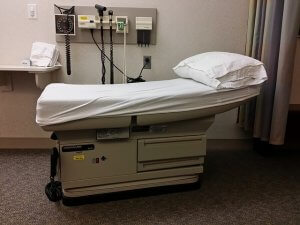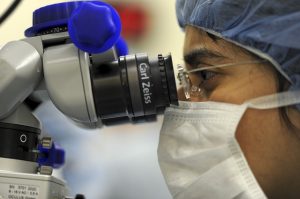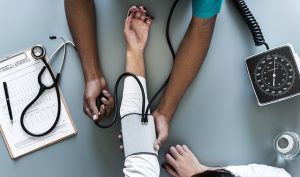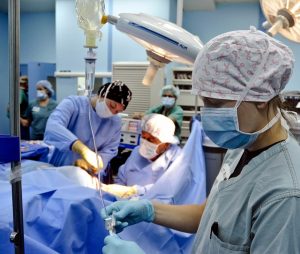It takes time to pass the USMLE exams and get ECFMG certification. Even then, a residency candidate may not match into a program. If they can and do stay in-country, they have to find a way to subsist, and that is where brain waste sets in.
Brain waste is the term used to describe people who are overqualified for their positions. It is the foreign medical graduate who must drive for Uber or work as hotel concierge in order to make ends meet. It is earning minimum wage despite the education to make a comfortable living and save lives. It is unfortunate, but it happens.
Brain Waste Costs the Country
 One of the bizarre things about brain waste is that the victim of brain waste is not just the foreigner who cannot use his or her medical training. It also cost the state and the country in tax revenues that could be obtained by higher income earners. According to one article, brain waste cost the State of California approximately 700 million dollars in taxes. Imagine how much it costs the entire country.
One of the bizarre things about brain waste is that the victim of brain waste is not just the foreigner who cannot use his or her medical training. It also cost the state and the country in tax revenues that could be obtained by higher income earners. According to one article, brain waste cost the State of California approximately 700 million dollars in taxes. Imagine how much it costs the entire country.
Brain Waste Sets the Tone for Future Employment
Brain waste has a harmful and lasting effect on the employment opportunities of FMGs. It waste precious time for FMGs who could be getting experience in the medical field and improving the odds of future residency positions. Basically, driving for Uber doesn’t do much for your curriculum vitae. In some circumstances, FMGs are also taking very low-skill medical positions such as medical aids and assistants. This is only slightly better, and FMGs have much more to offer the medical community. Their brains are wasted in low-skill positions.
Brain Waste is Crazy When There is a Physician Shortage
The most astonishing part of brain waste when it comes to the medical community is that America is suffering a severe physician shortage that is only expected to grow as baby boomers reach the age where chronic age-related diseases are more common. According to the Association of American Medical Colleges (AAMC), the year 2032 will see a physician shortage of 122,000 physicians. While this is worrisome, it doesn’t seem like the medical community is doing much to make it easier for FMGs to fill this physician shortage.
Why Make it Difficult for FMGs?
While the difficulty FMGs face getting into a residency program in the U.S. seems contraindicated to the state of the physician population, it is not completely without warrant. Whether or not you are of the opinion that the U.S. has one of the top medical systems in the world, you have to admit it does have quality standards. Some foreign medical schools have more stringent standards than the U.S., but some also fall completely short of acceptable. This is why there is a lengthy vetting process to ensure that FMGs were trained in a manner that satisfies American standards. It is also why some residency program directors may be a little leery of hiring FMGs without local experience.
There are Programs to Ease FMGs Path to Practicing Medicine
There are visa programs that will help FMGs stay in the United States as long as they promise to practice in rural areas, but this still means that an FMG must find a residency. There are also unique bills such as the Holly Mitchell Bill in California that allows Spanish-speaking IMGs to work in underserved areas under supervision. There are many people who recognize the absurdity of the difficulty FMGs face in the U.S., and they are trying to do something about it.
What can FMGs Do About Brain Waste?
If you are an FMG struggling to get into a residency program, you may feel helpless, but there are many things you can do to increase your chances of matching in a residency program. Most of it has to do with getting involved in the U.S. healthcare system. Volunteer at hospitals that have residency programs you desire. Converse with doctors, nurses, and staff, so your residency application will have a face to go with your name. Enroll in observerships, and get letters of recommendation from local doctors. Lastly, make sure you are prepared for the USMLE exams, so you don’t end up wasting precious time retaking exams.
The Struggle is Real, but FMGs Can Improve Their Odds
 In the U.S., there are many inequities, and foreign populations sometimes suffer disparities because of efforts to improve quality that have collateral damages or consequences. Obviously, this does not mean all hope is lost, or you wouldn’t be here. Just make sure that if you don’t match into a residency that you are engaging in behaviors that will improve your odds next time. Unfortunately, this may involve some brain waste in order to survive financially, but make sure it also includes further efforts to get involved in the medical community in which you desire in your future.
In the U.S., there are many inequities, and foreign populations sometimes suffer disparities because of efforts to improve quality that have collateral damages or consequences. Obviously, this does not mean all hope is lost, or you wouldn’t be here. Just make sure that if you don’t match into a residency that you are engaging in behaviors that will improve your odds next time. Unfortunately, this may involve some brain waste in order to survive financially, but make sure it also includes further efforts to get involved in the medical community in which you desire in your future.
 A medical school does not necessarily have to meet every standard in order to be included on the World Directory, but the WFME uses these standards as a guide to evaluating the program. The WFME admits that these standards must be applied differently in different locations according to a “local context.” It also recognizes the overall aim of standardization in a world that is increasingly globalized or international.
A medical school does not necessarily have to meet every standard in order to be included on the World Directory, but the WFME uses these standards as a guide to evaluating the program. The WFME admits that these standards must be applied differently in different locations according to a “local context.” It also recognizes the overall aim of standardization in a world that is increasingly globalized or international. If you ask program directors, they will likely tell you this is not the case. In fact, program directors are fully aware of the crucial role IMGs play in filling the growing physician gap that strains the U.S. healthcare system. Still, the statistics show that IMGs still struggle to get into residency slots.
If you ask program directors, they will likely tell you this is not the case. In fact, program directors are fully aware of the crucial role IMGs play in filling the growing physician gap that strains the U.S. healthcare system. Still, the statistics show that IMGs still struggle to get into residency slots.


















